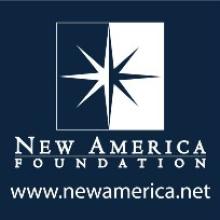"Localism Over Consolidation: An Exploration of Public Broadband Options" May 28th at New America Foundation in DC
New America Foundation's Open Technology Institute will host "Localism Over Consolidation: An Exploration of Public Broadband Options" from 9:30 - 11 a.m. on May 28th. Chris will be participating in the discussion; if you can't make it to DC, the event will be live streamed.
Conversation will focus on different approaches to improve connectivity and community strategies to make those approaches successful.
From the event page:
Today, more and more communities are thinking of broadband as a local issue. Even large cities like Baltimore, Seattle and Los Angeles have recently begun public discussions about ways to improve broadband services and what role the local government could play in that improvement. Current technology policy debates about net neutrality and the potential Comcast-Time Warner Cable merger mean it is more important than ever that local governments play a more active role in ensuring their communities do not get left behind in the digital age.
Joining Chris:
- Joanne Hovis,President, CTC Technology & Energy, @joannehovis
- Will Aycock, General Manager, Greenlight, Wilson, NC, @greenlightnc
- Catharine Rice, President, SouthEast Association of Telecommunications Officers and Advisors (SEATOA), @seatoa
Sarah Morris, Senior Policy Counsel at the New America Open Technology Institute will moderate. You can sign up for the event and livestream on the 28th at the event page.


